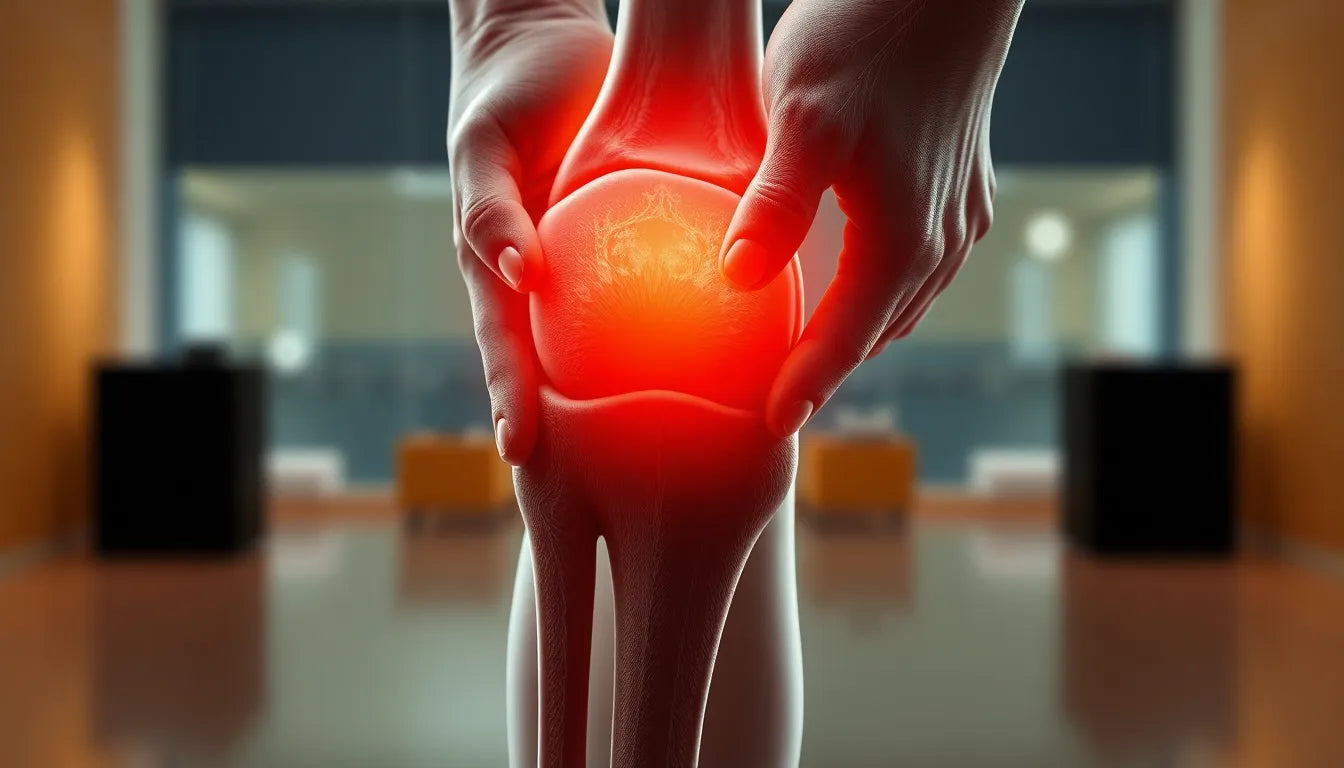Neck strain is an all-too-common ailment that can sneak up on anyone, disrupting daily life and productivity in the blink of an eye. Whether you're an office worker glued to a computer screen or someone who spends hours on the road, neck strain doesn't discriminate. The discomfort caused by neck strain can range from a mild annoyance to a debilitating pain that limits your ability to perform even the simplest tasks. Understanding the causes and treatments for neck strain is crucial for anyone looking to maintain a healthy, pain-free lifestyle.
understanding neck strain and its causes
At its core, neck strain is an injury to the muscles and tendons in the neck area. This condition often results from overuse, poor posture, or sudden, awkward movements. Imagine spending long hours hunched over a desk or craning your neck to look at a smartphone—these are prime examples of how modern life can contribute to neck strain. Stress, too, plays a significant role; when tension builds up, it often manifests physically in the neck and shoulders. Additionally, injuries such as whiplash from a car accident can lead to acute neck strain, further highlighting the diverse causes of this condition.
the importance of timely treatment
Addressing neck strain promptly is not just about alleviating immediate discomfort; it's about preventing the progression to chronic pain. Left untreated, what starts as a minor strain can develop into a persistent issue that affects your overall quality of life. Chronic neck pain can lead to headaches, reduced mobility, and even impact your mental health due to ongoing discomfort and frustration. Early intervention through effective neck strain treatment can prevent these complications, ensuring you maintain an active and fulfilling lifestyle.
a comprehensive approach to relief
This blog post aims to provide a thorough guide for anyone seeking relief from neck strain. We will explore both self-care strategies and professional treatments that have been proven effective. From manual therapy techniques and strengthening exercises to pain management and self-care tips, you'll find a wealth of information designed to help you regain control over your neck health. Whether you're dealing with an acute neck strain or managing chronic pain, this guide offers practical solutions to transform your experience and unlock lasting relief.
first-line treatments for neck strain
When it comes to treating neck strain, manual therapy and exercise are often the first lines of defense. Techniques such as massage and cervical manipulation can significantly alleviate discomfort by relaxing tense muscles and improving blood flow. These methods, delivered by trained professionals, can provide immediate relief and set the stage for long-term recovery. Equally important are strengthening and range-of-motion exercises, which are supported by clinical guidelines as effective strategies for reducing pain and preventing recurrence. These exercises help build muscle strength and flexibility, promoting better posture and reducing the likelihood of future strains.

Men's Posture Shirt™ - Black
Promotes a better posture and helps relieve pain/tension with patented NeuroBand™ tech.

Women's Posture Shirt™ - Black
Supports posture, relieves tension, and helps activate muscles with patented Neuroband™.
pain management strategies
Pain management is a critical component of neck strain treatment, especially in the short term. Oral analgesics and topical treatments can offer temporary relief from mild to moderate pain, allowing individuals to engage in daily activities with less discomfort. However, it's essential to approach these options with caution to avoid over-reliance. Patient education and reassurance are foundational elements in the recovery process, empowering individuals with knowledge about their condition and the steps they can take to manage it effectively.
self-management and physical therapy
Self-management strategies play a pivotal role in the treatment of neck strain. Practical tips such as using heat packs, modifying daily activities, and implementing home exercise programs can significantly improve outcomes. These strategies not only provide immediate relief but also empower individuals to take control of their recovery. For those experiencing persistent symptoms or functional limitations, engaging in physical therapy is highly recommended. A tailored rehabilitation program can address specific needs, ensuring a comprehensive approach to healing.
treatment for specific neck pain subtypes
Neck pain is not a one-size-fits-all condition, and treatment strategies should be tailored to the specific subtype of pain experienced. For acute neck pain, short-term interventions such as Transcutaneous Electrical Nerve Stimulation (TENS), cervical collars, and early mobility exercises can be beneficial. These methods, combined with education, can help individuals manage pain effectively and promote faster recovery.
In cases of chronic or radiating pain, a multimodal approach is often necessary. This may include manual therapy, specific strengthening exercises, and neuromuscular retraining to address the underlying causes of pain. Additionally, special clinical tests, such as the Spurling test, can help differentiate neuropathic or radicular pain, guiding more targeted interventions.
By understanding the nuances of neck pain and implementing a comprehensive treatment plan, individuals can achieve significant relief and prevent future occurrences. Whether through manual therapy, exercise, or self-management strategies, addressing neck strain promptly and effectively is key to maintaining a healthy, pain-free lifestyle.
patient expectations and research insights
Understanding patient expectations and integrating research insights into neck strain treatment can significantly enhance patient outcomes. According to a study published in the PM&R Journal, many patients place high expectations on manual therapy and exercise for neck strain relief. About 87% of patients expect significant benefits from massage, while 75% anticipate improvement from cervical manipulation. Interestingly, only a small percentage believe that surgical intervention will be beneficial for typical neck pain, underscoring the preference for non-invasive treatments.
Evidence-based recommendations from authoritative sources like Physio-Pedia and the Mayo Clinic emphasize a multifaceted approach to neck strain treatment. Manual therapy, exercise, and patient education are cornerstones of effective treatment protocols. These strategies not only address the immediate symptoms but also empower patients to manage their condition proactively, reducing the risk of recurrence.
practical advice and ergonomic solutions
Incorporating practical advice and ergonomic solutions into your daily routine can make a significant difference in managing neck strain. Simple self-care steps such as using pain relievers, applying heat or cold therapy, and gradually reintroducing movement can provide immediate relief. It's also crucial to pay attention to ergonomics, particularly if you spend long hours at a desk or in front of a screen. Adjusting your workspace to ensure proper posture can help prevent neck strain from developing in the first place.
For persistent or severe symptoms, seeking professional guidance is advisable. A healthcare provider can assess your condition and recommend tailored interventions, such as physical therapy or specialized exercises. If neck pain is accompanied by symptoms like numbness, weakness, or radiating pain, it may indicate nerve involvement, requiring a more thorough medical evaluation.
frequently asked questions
What are the most effective exercises for neck strain?
Effective exercises for neck strain typically include neck stretches and strengthening routines. Experts recommend exercises like chin tucks, side-to-side head rotations, and shoulder shrugs to improve flexibility and strength in the neck muscles.
When should I see a doctor for neck strain?
You should consider seeing a doctor if your neck strain persists for more than a few days, is severe, or is accompanied by symptoms such as numbness, tingling, or weakness in the arms. These could indicate a more serious underlying issue that requires professional evaluation.
Can neck strain be prevented?
Yes, neck strain can often be prevented by maintaining good posture, using ergonomic furniture, and incorporating regular exercise into your routine. Taking frequent breaks from repetitive activities and practicing stress management techniques can also help reduce the risk of neck strain.
How long does it take to recover from neck strain?
Recovery time from neck strain varies depending on the severity of the condition and adherence to treatment. Mild cases may resolve within a few days to a week, while more severe strains might take several weeks. Consistent application of recommended treatments can facilitate faster recovery.
Are there any risks associated with manual therapy?
While manual therapy is generally safe, it does carry some risks, particularly if performed by unqualified individuals. It's essential to seek treatment from licensed professionals who can tailor the therapy to your specific needs and ensure safe application.
Kilder
- UCHealth. "Neck Strain."
- Mayo Clinic. "Neck Pain: Diagnosis & Treatment."
- Physio-Pedia. "Neck Pain: Clinical Practice Guidelines."
- JOSPT. "Neck Pain Clinical Practice Guidelines."
- New York State Workers' Compensation Board. "Neck Injury Medical Treatment Guidelines."
- American Family Physician. "Diagnosis and Management of Neck Pain."
- Cleveland Clinic. "Neck Pain."
- NCBI. "Neck Pain and Cervical Disc Degeneration."


















